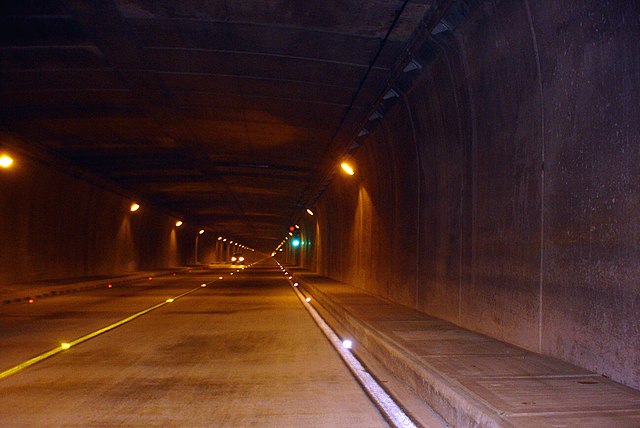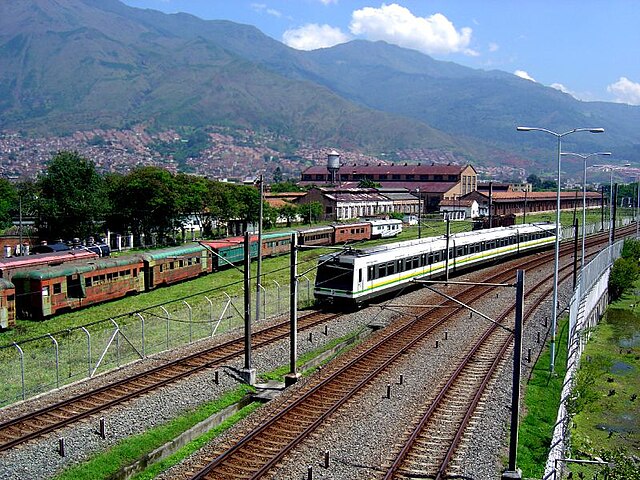Transport in Colombia is regulated by the Ministry of Transport.
Túnel de Occidente in Antioquia. The tunnel was the longest in Latin America until the opening of La Línea in 2020.
Muisca culture golden raft
The Pumarejo bridge in Barranquilla. The bridge serves to cross the Magdalena River between the Departments of Atlántico and Magdalena. It is also one of the oldest standing bridges in Colombia.
Vehicles on the El Dorado Airport platform
Rail transport in Colombia
The Colombia railway network has a total length of 3,304 kilometres (2,053 mi). There are 150 kilometres (93 mi) of 1,435 mm standard gauge connecting Cerrejón coal mines, Tren del Cerrejón, to the maritime port of Puerto Bolivar at Bahia Portete, and 3,154 kilometres (1,960 mi) of 3 ft narrow gauge of which 2,611 kilometres (1,622 mi) are in use. The state-owned railway company, Ferrocarriles Nacionales de Colombia, was liquidated in the 1990s. Since then passenger rail service in Colombia is provided only as tourist steam trains on the Bogotá savanna railway, now called Turistren, and between Bogotá and Zipaquirá, and a general daily passenger service around Barrancabermeja, and its surroundings, provided by Coopsercol.
A Cerrejón coal train near Uribia, La Guajira
The Medellín Metro, in Medellín
Heritage railway Tren de la Sabana, runs between Bogotá and Zipaquirá







